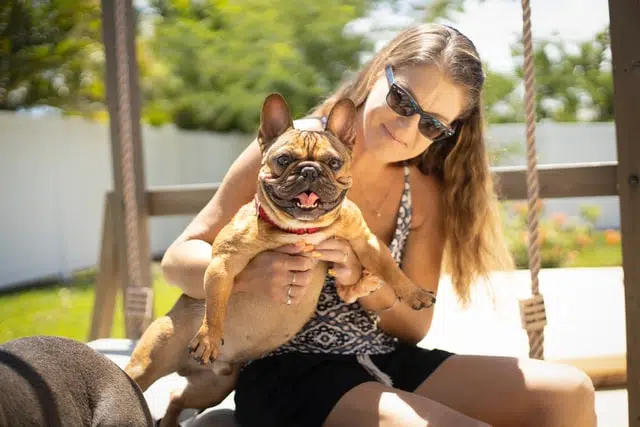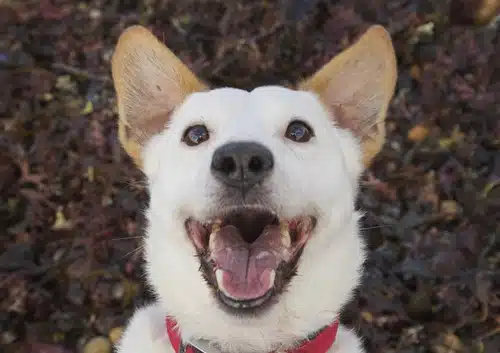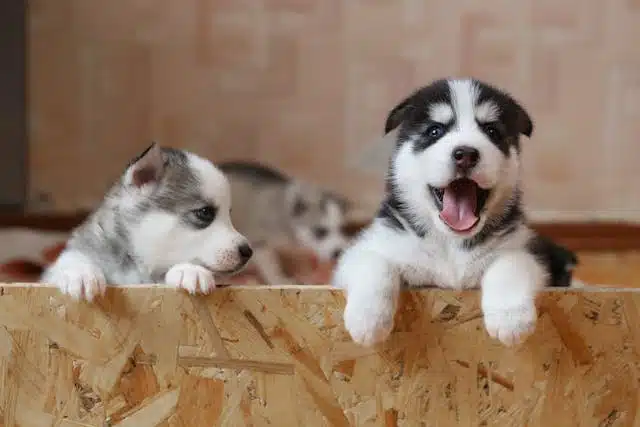Home » Blog » Pet » Pets: Understanding Them » Wondering How to Speak Dog? Read This
Categories
Tags
animal welfare
breed profile
buying a car
buying a pet
Car
car accessories
car care
car features
car insurance
Car safety
car sales
car service
cat
cat behaviour
cat body language
Cat Breeds
cat food
cat insurance
comprehensive car insurance
Dog
Dog Behaviour
dog body language
Dog Breeds
dog food
Dog Insurance
dog training
eco friendly cars
Kitten
New Car
pet accessories
pet activities
Pet Adoption
pet breeders
pet days of the year
pet fun stuff
Pet Health
pet insurance
pet parenting
Pet Safety
pet services
Puppy
rescue pets
road safety
road trip
safe driving
Recent Blog:
Facebook Posts
9 hours ago
Are intestinal worms setting up camp in your dog’s gut without paying rent? Here’s how to spot the main culprits and get rid of them too:![]()
![]() Preventing, Identifying and Treating Intestinal Worms in Dogs - bit.ly/43YjCKu
... See MoreSee Less
Preventing, Identifying and Treating Intestinal Worms in Dogs - bit.ly/43YjCKu
... See MoreSee Less
Preventing, Identifying and Treating Intestinal Worms in Dogs
www.pd.com.au
Intestinal worms, such as roundworms in dogs are one of the least glamorous topics on the planet. These intestinal parasites that basically use our dogs
PD Insurance
with Dogs West.
2 days ago
We enjoyed meeting #breeders #doglovers and members at the Dogs West Open Day. Special thanks to our partner Dogs West for organising an incredible event. There is still time to enter our pawsome competition. Click here for details: bit.ly/4covyce![]() #PDinsurance #dogswestopenday #dogswest
... See MoreSee Less
#PDinsurance #dogswestopenday #dogswest
... See MoreSee Less
2 days ago
Did you know? The Manx is a breed that is known for its lack of a tail, which is caused by a genetic mutation.
... See MoreSee Less
How many times have you wished you knew how to speak dog? Dog owners will attest to the fact that their canines have an entire language and they’re constantly communicating with us….or trying to!
From playful growls to ‘that’s definitely an intruder’ barks (spoiler: it’s rarely an intruder) our dogs definitely know how to get vocal. Plus there’are the signs that we hopefully already understand, like wagging tails or the playful bow.
For most owners, knowing the basics is fine. But for those who want to speak dog a little more fluently, we’re here. We’re not promising that you’ll be the next Dr. Doolittle, but we can help you understand a little bit more of what your dog is telling you.
Now if we could just figure out how to get them to understand when the humans say no…
Learn to speak dog – common sounds decoded
If you’ve been stuck at home next to a bored dog, or know when the delivery man is here because your dogs erupt in a chorus of barks (find out here: why do dogs bark?), you’ll know that they make a lot (!) of noises.
Here’s a quick guide to the vocal range of your dog.
Howling
If you’ve ever owned some kind of hound like a beagle or a basset hound, you’ll know aaaalll about the different types of howls. What do they mean in the world of dog communication? Howls can mean lots of different things, the same way that shouting can for people.
A howl might be a call to other dogs that they don’t have sight of or can’t reach. It could also be a sign of sadness of distress, such as when a dog is hurt or when they’re bored and lonely at home.
And, you’ll have noticed that a howling dog quickly turns into a howling dog choir. There’s quite a strong sign of canine affiliation associated with howling.
Growling
A lot of people assume that a dog growling means they’re feeling threatened or are aggressive. That can be the case, but not necessarily.
Growls actually form quite a large part of dog communication. And they can mean more than just ‘get away!’ If you’ve ever watched boisterous dogs playing with each other, there’s often a lot of growling involved. It’s a bit like kids yelling at each other in excitement on the playground.
When it comes to growling, pitch is important. Knowing the different growls your dog has will go a long way to helping you speak dog properly. For example, a medium pitch growl is probably a playful rather than warning growl.
A low-pitched growl is more likely to be a warning for someone to back off or stay away. In this case, it’s obviously much better for your dog to express themselves vocally rather than physically. Read more about this here.
Interestingly, the American Kennel Club did a study showing that when warning growls were played over a speaker, dogs avoided grabbing a desirable bone. However, they happily went after the bone when it was play growls on the speaker.

Whining
The whine is your dog’s go-to for a huge amount of feelings and messages. It could mean your hound is excited, scared, stressed, or asking for something. Sometimes a whine can even be a positive thing, like a puppy proudly showing you that he went outside to do his business.
“If your dog is whining with no subtle cues that he is happy or needs to go outside,” Hills Pet Nutrition company, “there might be an underlying health concern for you to address.” A quick trip to the vet is best in this case.
Ever wondered why dogs sometimes scoot across the floor? Anal gland expression in dogs might be the answer.
How to speak dog with your body language
Hopefully, we all know that communication isn’t just verbal. Anyone who’s caught a spouse rolling their eyes at you as they say ‘that’s fine’ can confirm that sometimes actions speak louder than words.
The same is true of dogs…and yes, sorry, but even your ever-faithful dog has rolled their eyes at you before. The humans are always offering them strokes when they really want a bone.
Here’s how to use your body language to talk to your dog. Because communication is what keeps a relationship strong, right?
Eyes and face
The eyes are the window to the soul. So maybe that’s why your dog is always staring at you? Either that, or it’s dinner time. Learn to use your eyes and facial expressions when communicating with your dog to level-up your relationship.
Ever noticed that your dog raising his little canine eyebrows when he makes eye contact? That’s a good sign that he recognises you and is happy to see you. Try telling him that you’re happy to see him as well!
And while you’re raising your brows, did you know that keeping eye contact can actually help you bond with your dog? It releases oxytocin in your brain and floods you with those happy, loving emotions. Awww…!
Voice and pitch
You’ve already found out that dogs themselves use different pitches to convey different meanings, and we do it too without realising. Often, anxious dogs will avoid children who screech. Or nervous or abused dogs will cower if they hear someone shouting.
Do you use the ridiculous baby voice when you talk to your dog? Turns out, they love it. So go ahead and carry on with the high-pitched greetings and chatter with your dog.
If they need some calming or reassurance though, take it down a notch and speak softly and calmly. The same goes for if you need to issue a command or instruction. Keep your voice low and authoritative, because telling your dog to sit in a sing-song, high pitched voice can confuse them.

Touch
There’s not much better than a good snuggle with your dog. Gentle strokes are a way for your dog to bond with you and for you to show love to one another. Remember that you should only stroke a dog who initiates contact – unwelcome touch isn’t appreciated by either dogs or people.
Using touch is a great tool to tell your dog that you love them, to reassure them that everything is ok. Or even to convey excitement and happiness. You don’t have to speak dog like a pro to know that most dogs respond well to a scratch on the shoulder or chest.
A dog that trusts you will let you stroke the soft fur behind his ears, and doing this strengthens your bond. And in case you were wondering, your dog does enjoy the attention. Stroking and touching Rover in a way that he enjoys helps him to feel loved, and to love you back.
Show them you care with award winning dog insurance
Another way to tell your dog you care is to get pet insurance. That way, you know you can get medical treatment for them whenever they need it. There’s nothing like a bit of TLC to feel the love when you’re under the weather!
Share On:




